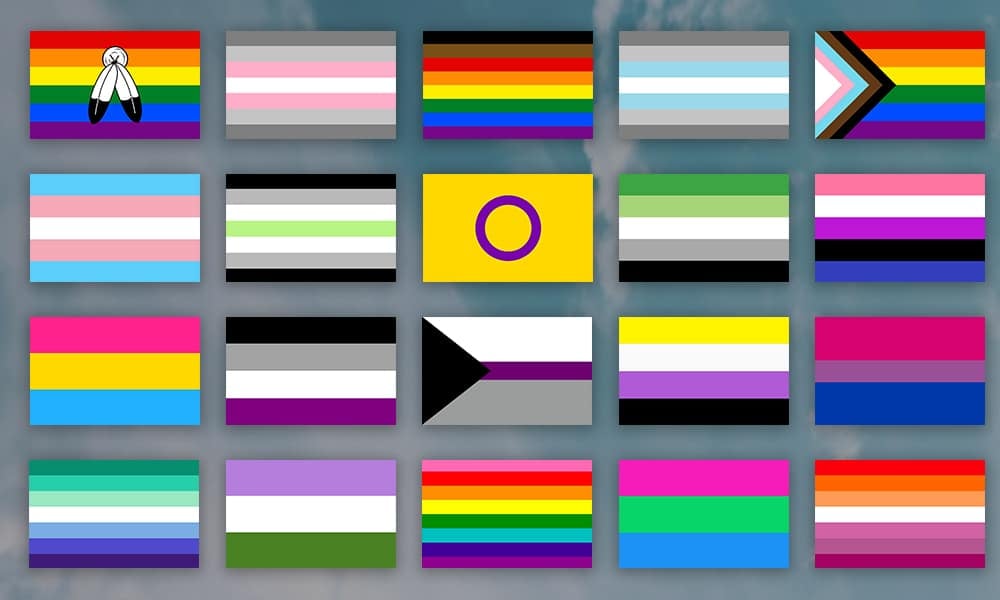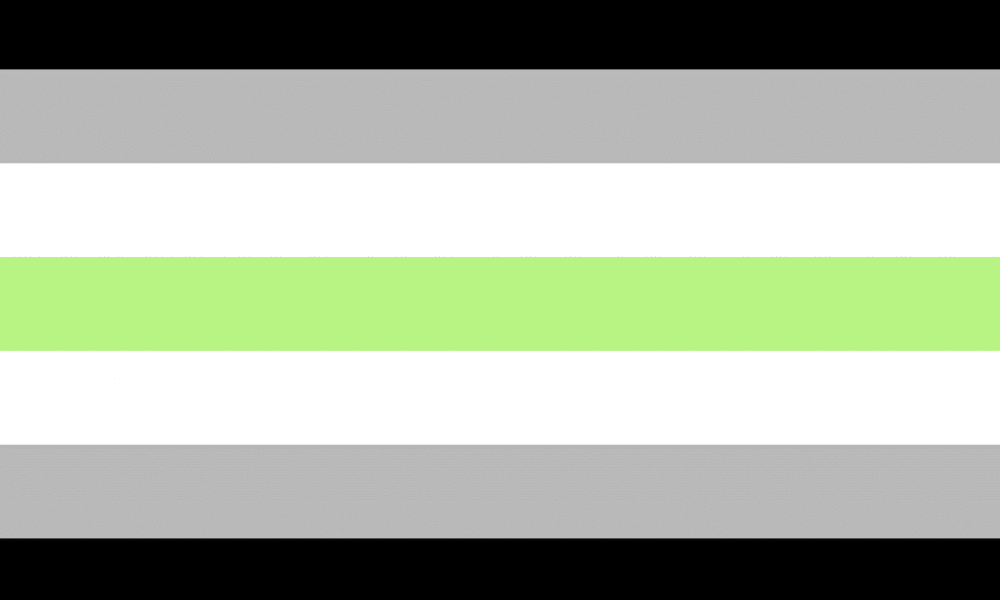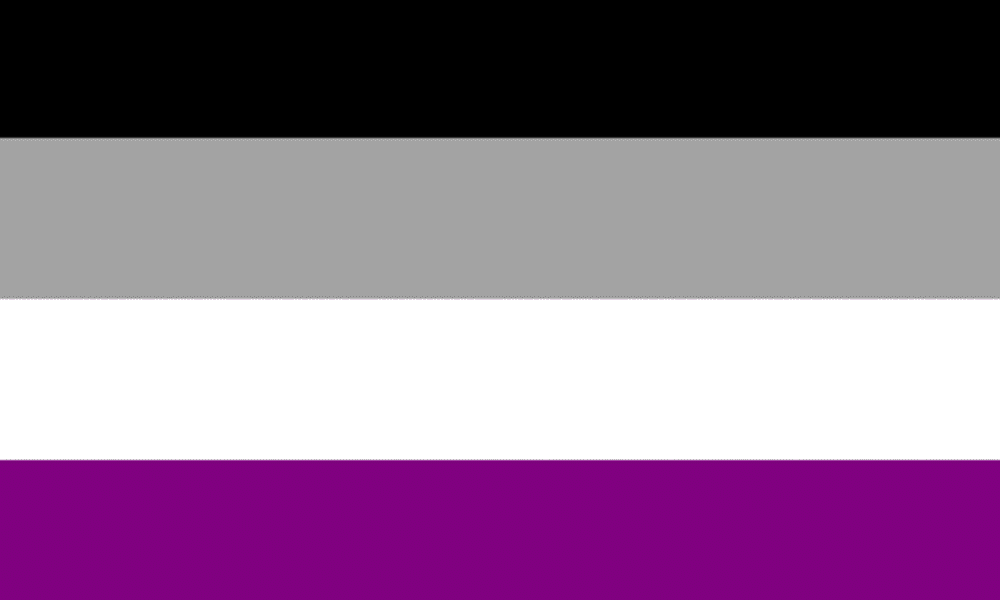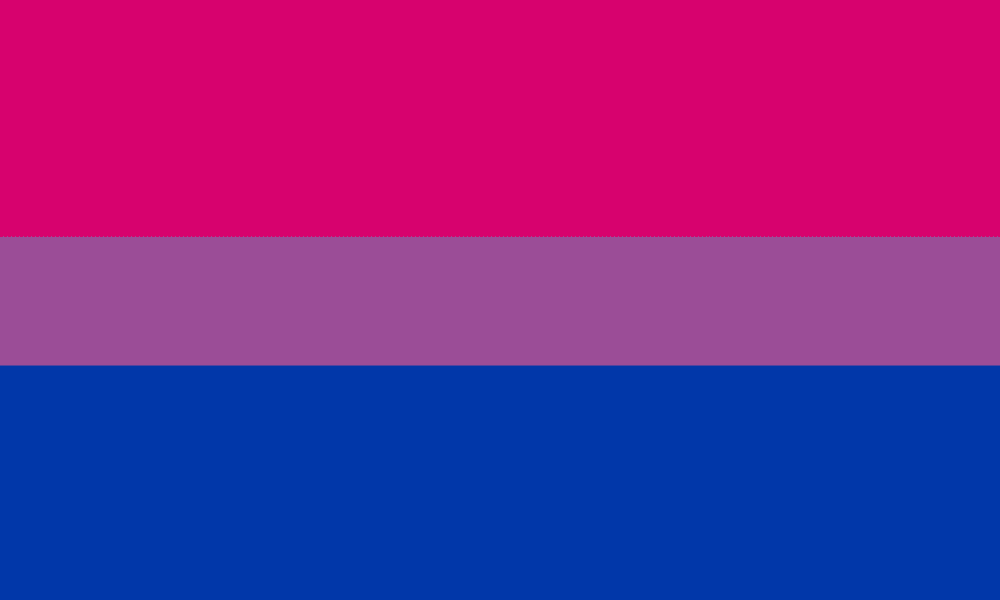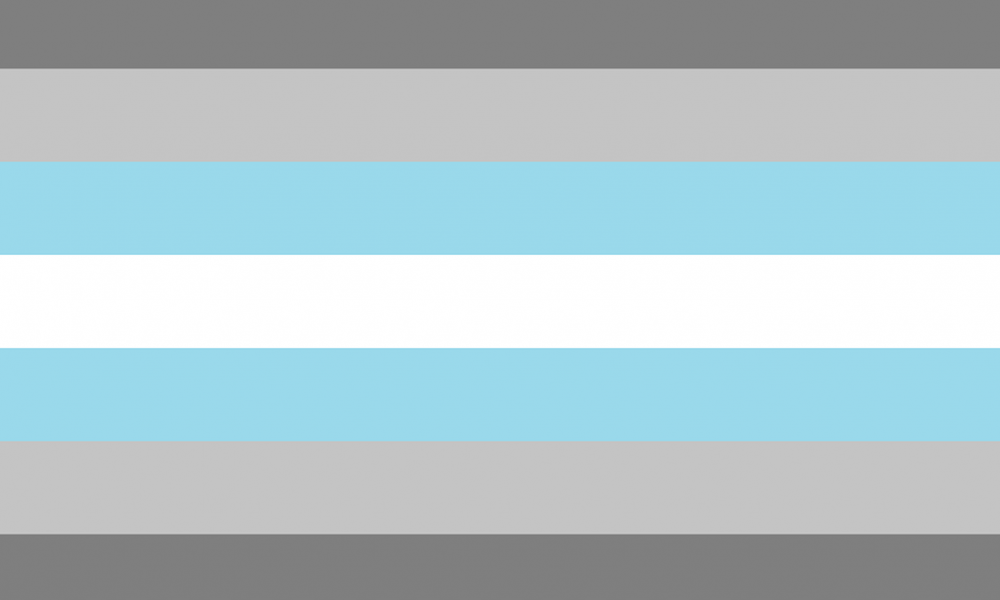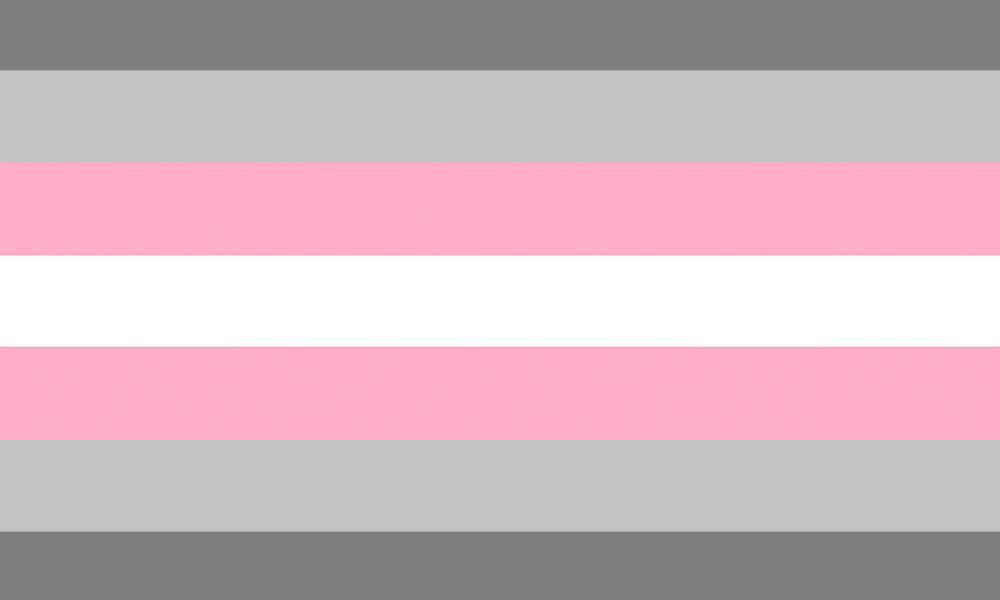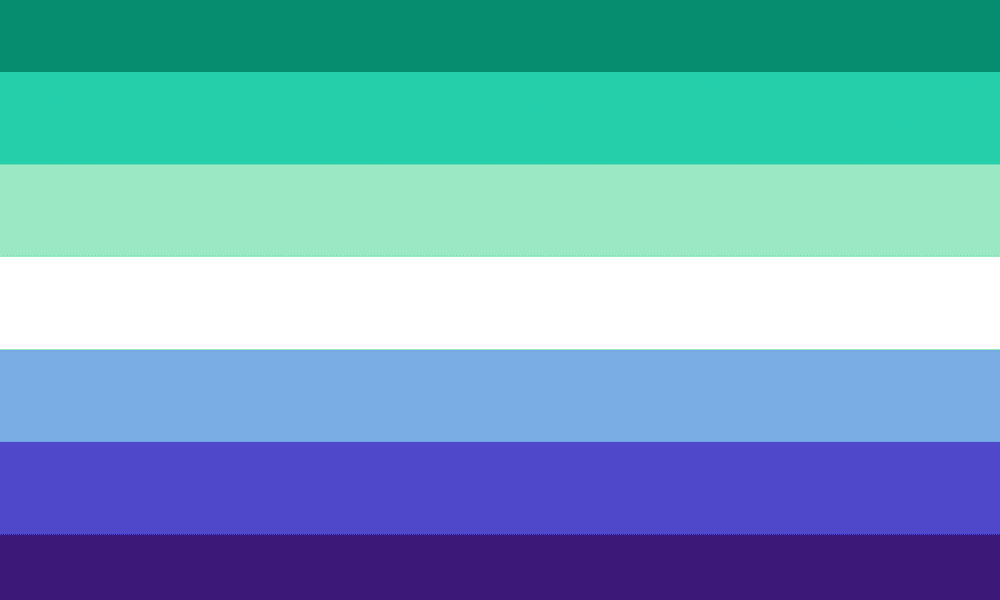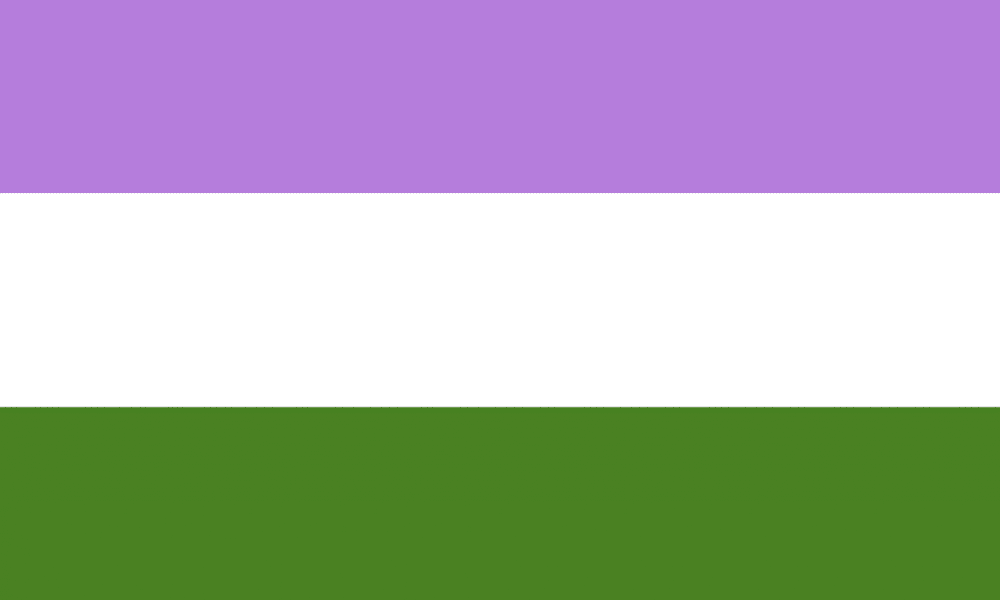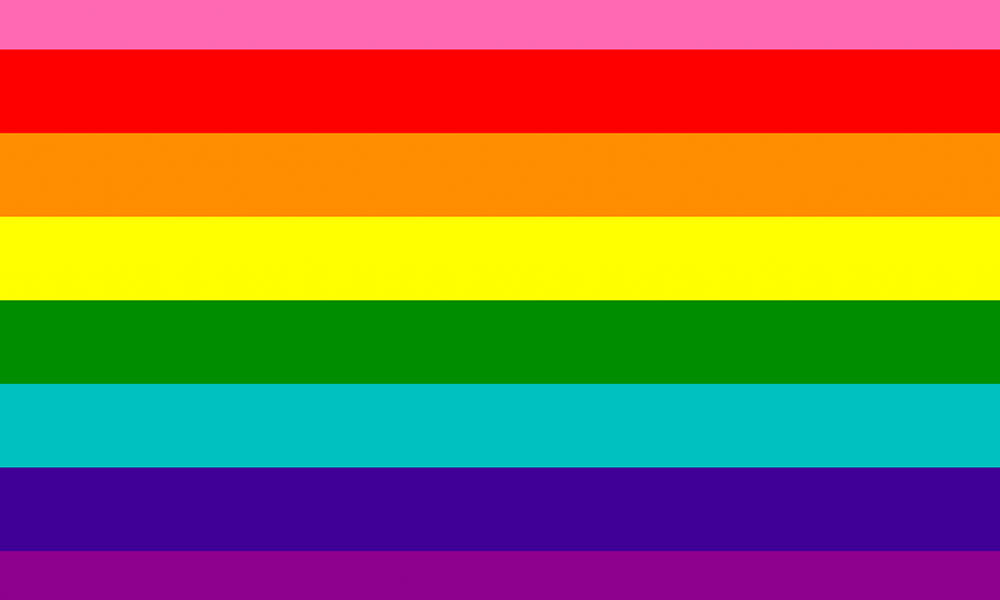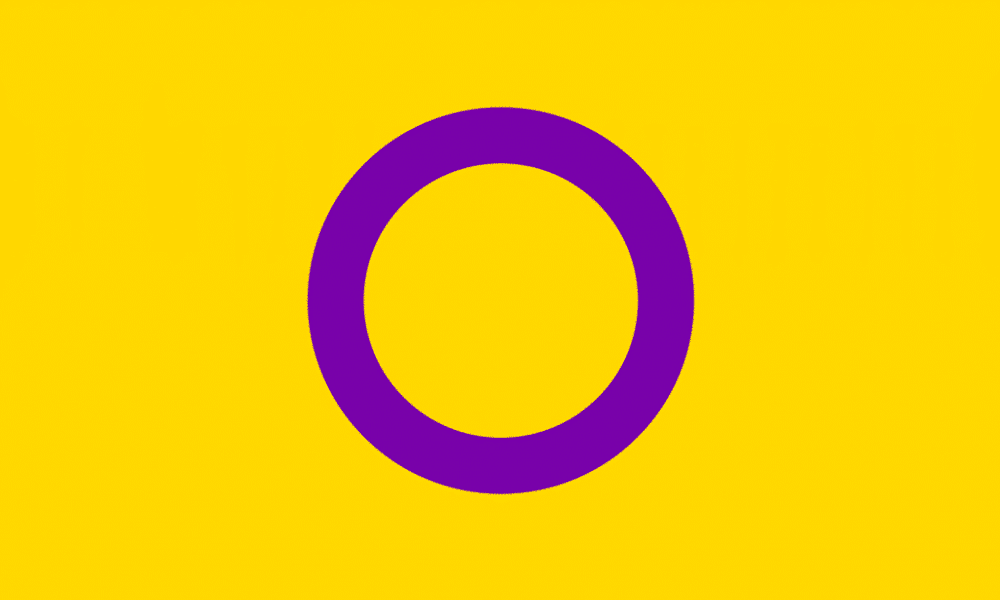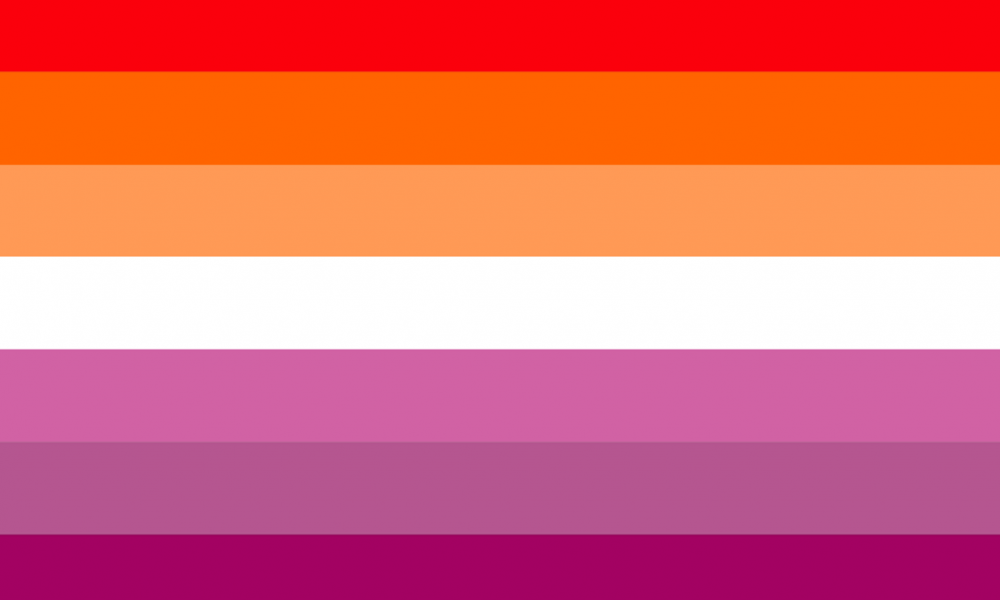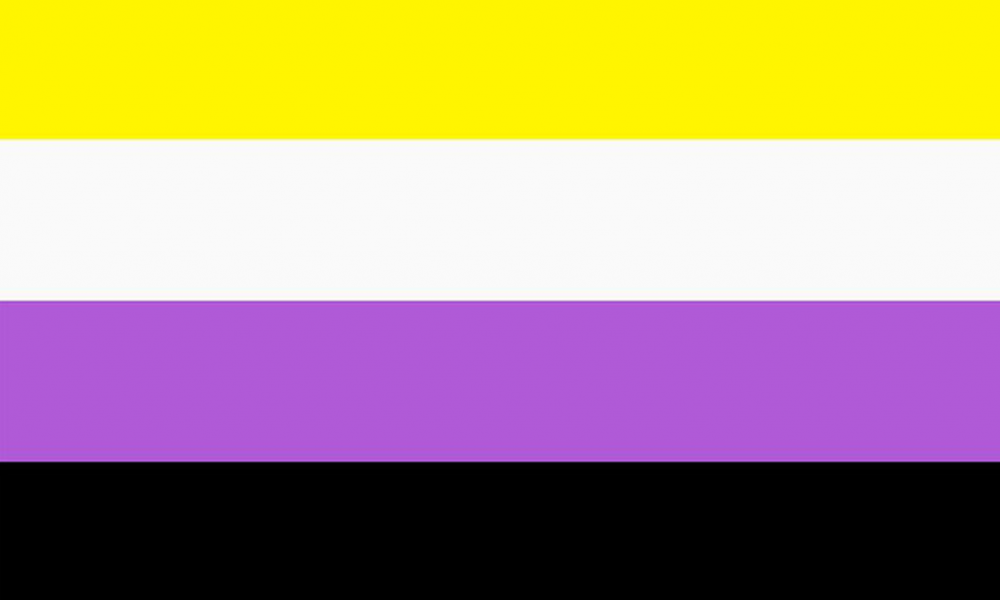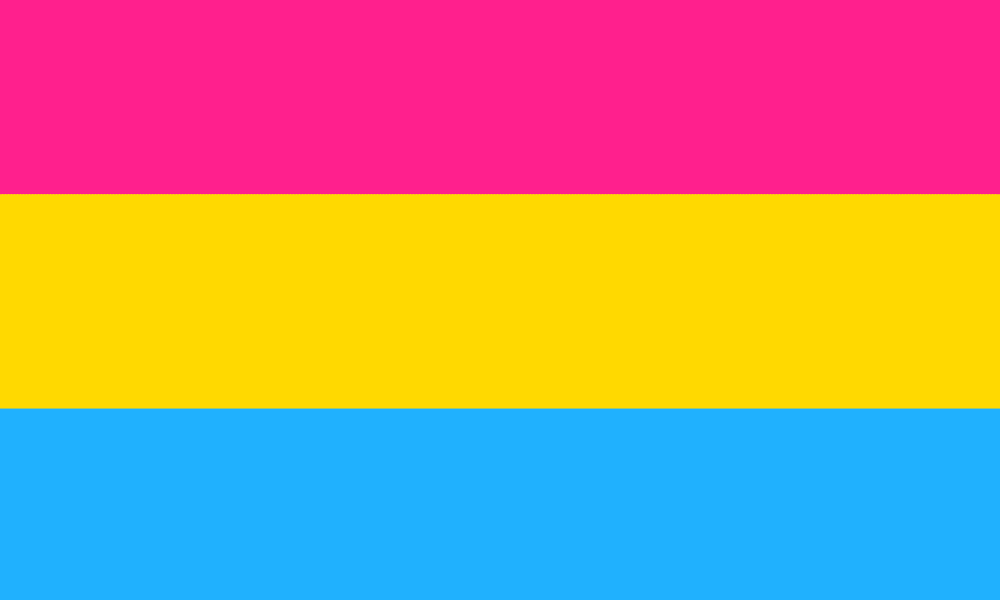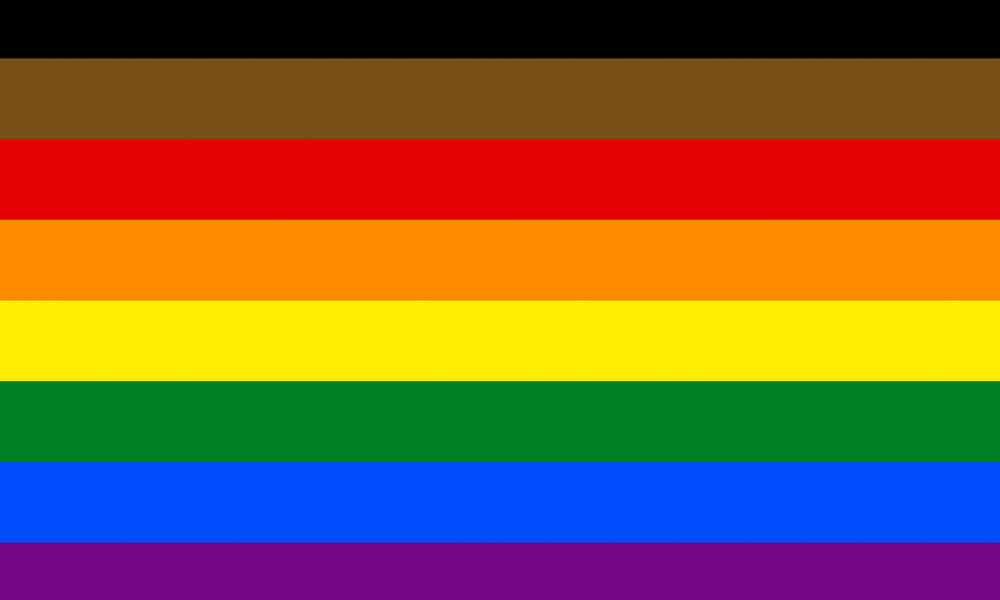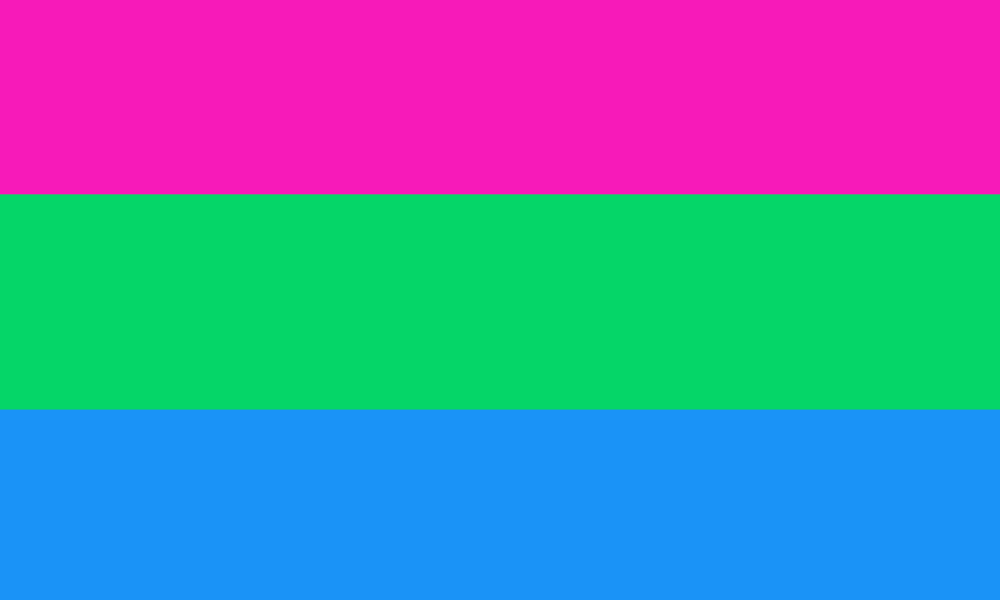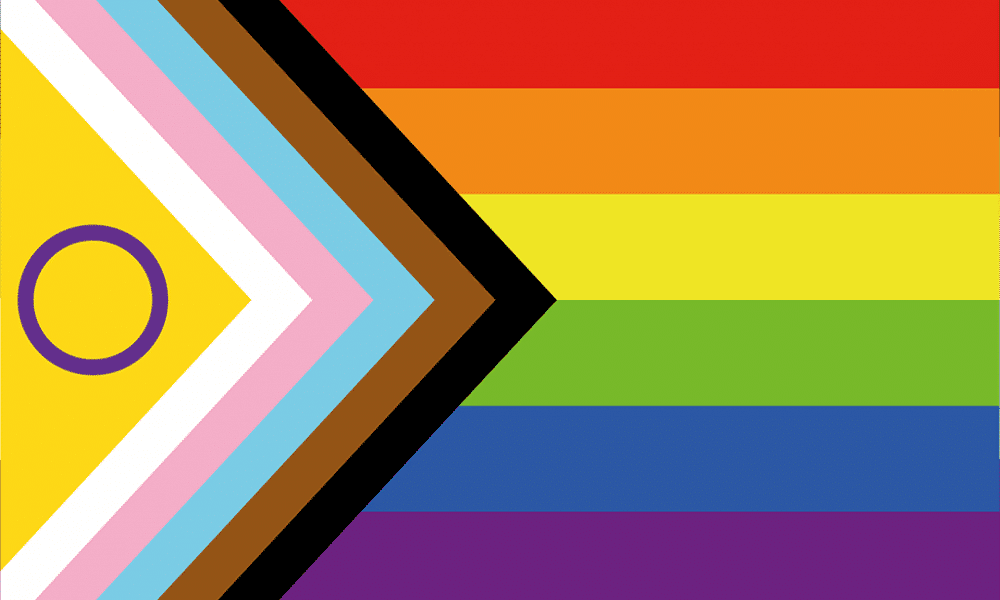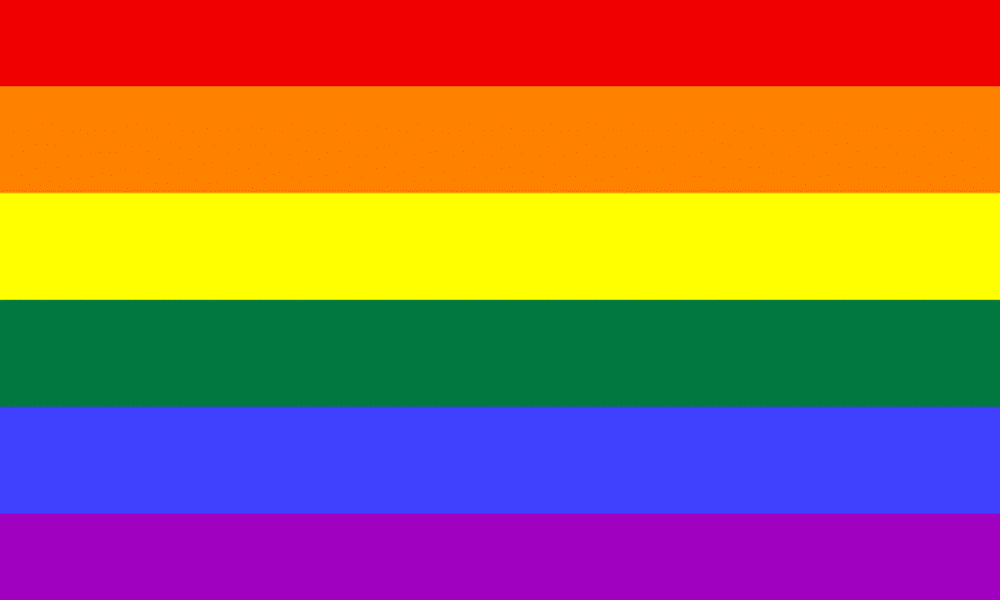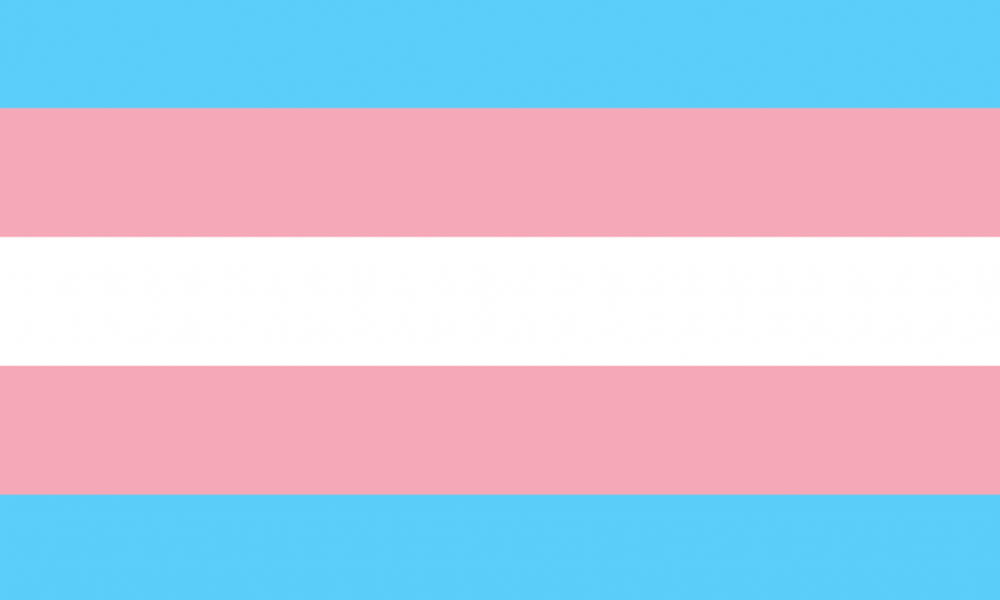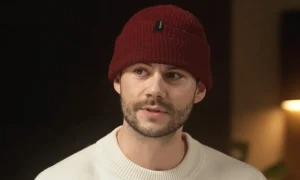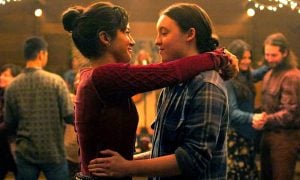How well do you know the Pride flags?
It’s time to learn all there is to know about pride flags. What do they represent? What do the colors mean? Who made them? Spoiler alert: Tumblr was a big player here.
There are many, many flags to choose from but for now, we are focusing on 22 in particular. We ran the order through a random generator for equality and fairness. And yes, we’ll be talking about the most well-known rainbow flag, from inception to where we are now.
The Demisexual Pride Flag

A demisexual person is usually a person who only experiences sexual attraction when they feel a true emotional bond with another person. The black triangle represents asexuality and the grey line represents asexuality and demi-sexuality. The white line represents sexuality and the purple line represents the idea of community. Created in the Asexual Visibility and Education Network forum (AVEN), the creator of this flag is user SonOfZeal.
Related | Queer BYU Graduate Wears Rainbow Flag for Graduation
The Two-Spirit Flag
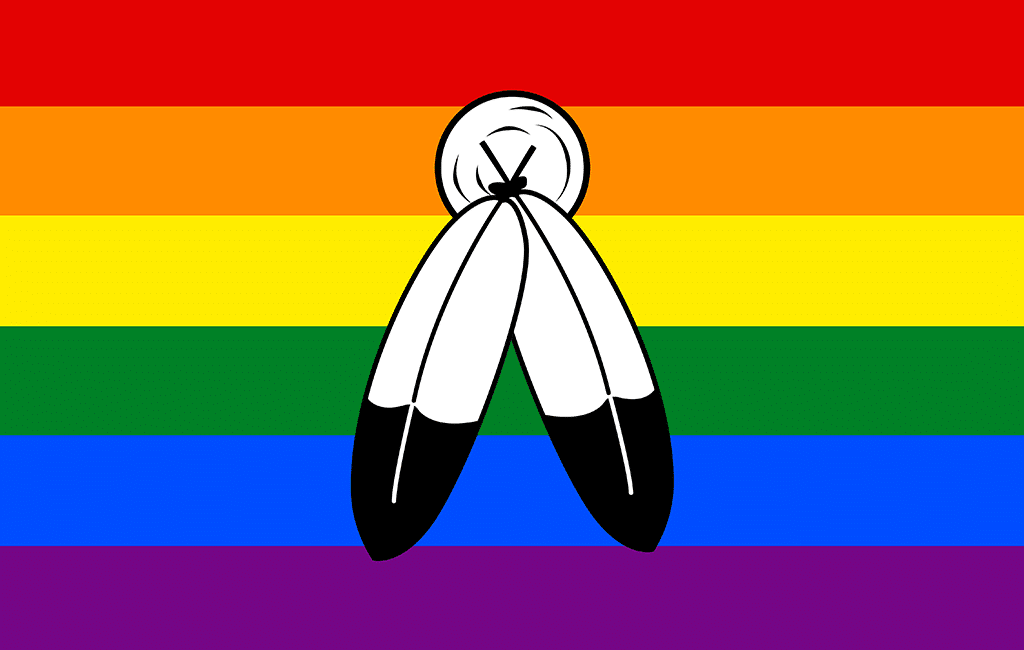
Two-Spirit is an umbrella term used by some Indigenous North Americans to describe Indigenous folks who identify across and between gender diversity and sexual orientation. There are many definitions of this term and each is nation-specific. The two feathers represent masculine and feminine identities. The circle represents the unity of those two identities. The rainbow lines are from the traditional Pride flag, which we’ll cover later on. The creator of this flag is Tumblr user 2Sanon.
The Genderfluid Pride Flag

A genderfluid person is usually a person who has a gender expression(s) or identity that is not constant or fixed. The pink line represents femininity. The white line represents the lack of gender. The purple line represents a combo of both masculinity and femininity. The black line represents all genders, including genders that do not align with femininity or masculinity. The blue line represents masculinity. The creator of this flag is JJ Poole.
The Polysexual Flag
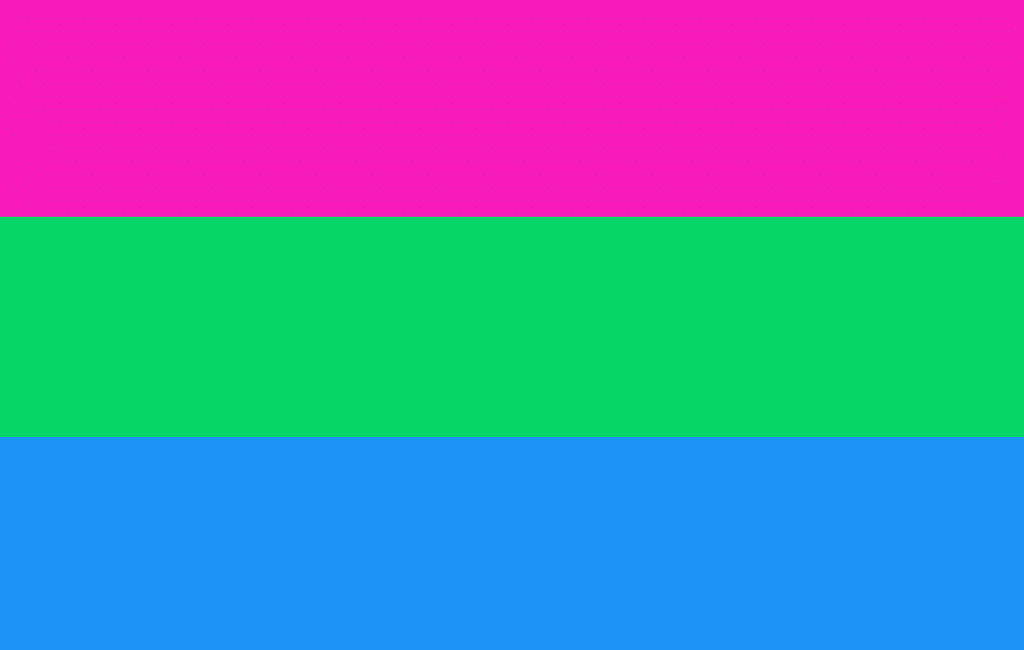
A Polysexual person is usually a person who is sexually attracted to multiple, but not all, genders. The pink line represents attraction to women. The green line represents attraction to those who don’t identify within the gender binary. The blue line represents attraction to men. The creator of this flag is Tumblr user Samlin.
The Aromantic Flag
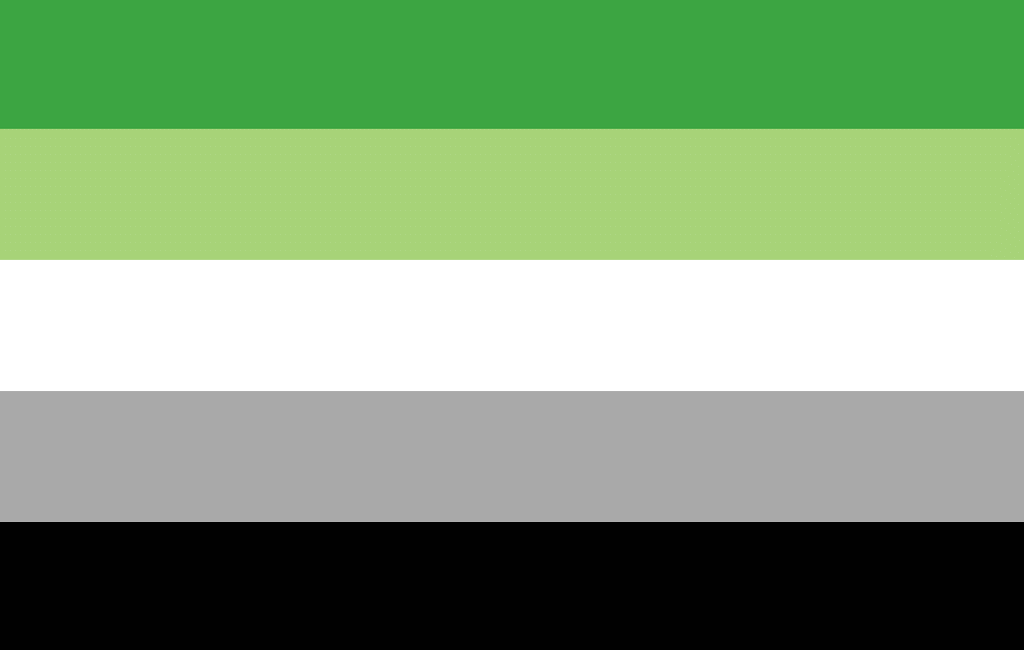
An aromantic person is usually a person who does not experience romantic attraction or does so in a notably different way than is traditionally thought of. The dark green line represents aromanticism. The light green line represents the aromantic spectrum. The white line represents platonic and aesthetic attraction, as well as queer/quasi-platonic relationships. The grey line represents grey-aromantic and demiromantic people, and the black line represents the sexuality spectrum. The creator of this flag is Tumblr user CameronWhimsy.
The Asexual Pride Flag
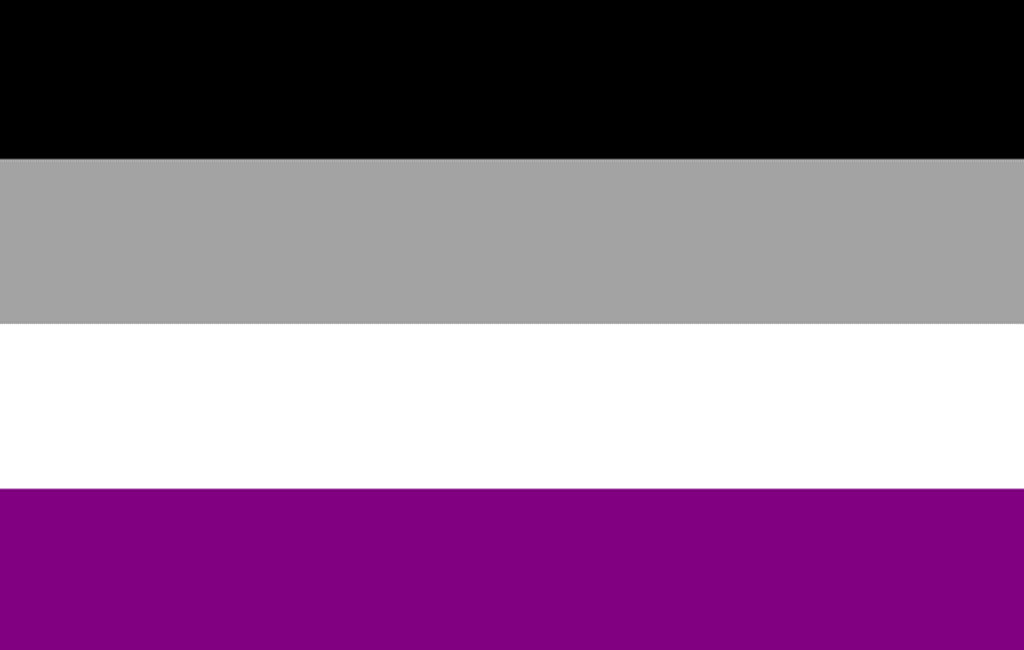
Asexuality is a term typically used to describe those who experience a lack of sexual attraction and/or low levels of sexual desire towards others. The black line represents asexuality. The grey line represents grey asexuality and demisexuality, and the white line represents non-asexual partners and allies. Finally, the purple line represents the idea of community. The creator of this flag is user Standup in the AVEN forum.
The Rainbow Flags
Now we’ve reached the rainbow flags, born from a symbol that has become synonymous with queerness. We’ll take you through five iterations of these flags, from conception to the present day.
The Gilbert Baker Pride Flag.
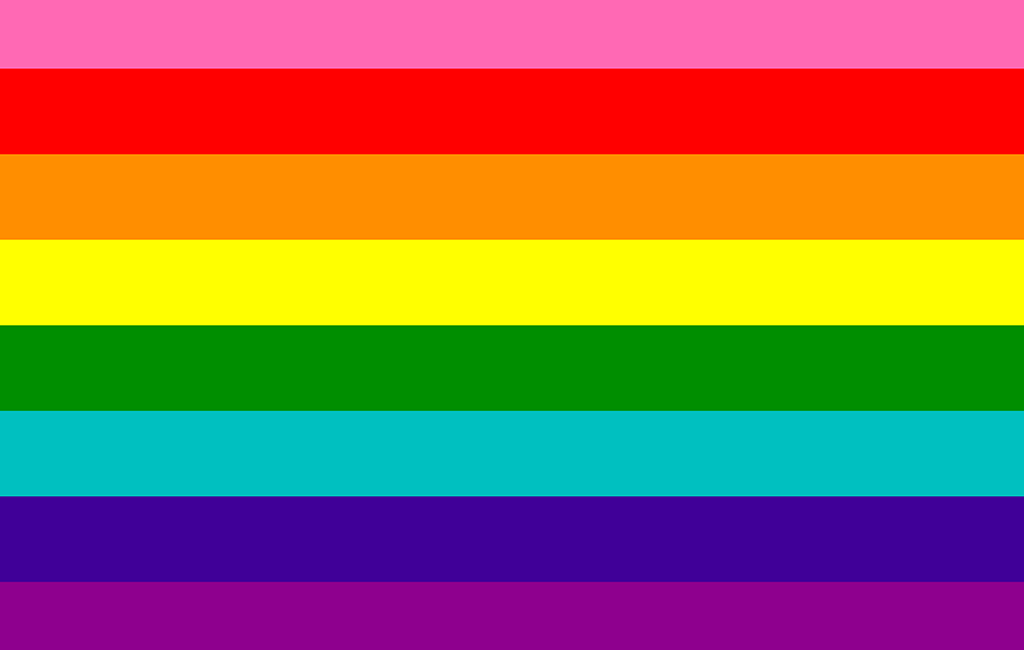
American artist, designer, and activist Gilbert Baker created this flag as a symbol of the LGBT community in 1978. He saw the rainbow as a natural flag from the sky, so he adopted eight colors for the stripes. Pink represents sex, red represents life, orange represents healing, yellow represents sunlight, green represents nature, turquoise represents art, indigo represents harmony and violet represents spirit. From there, there were several iterations that eventually led us to the traditional Pride flag.
The Rainbow Pride Flag
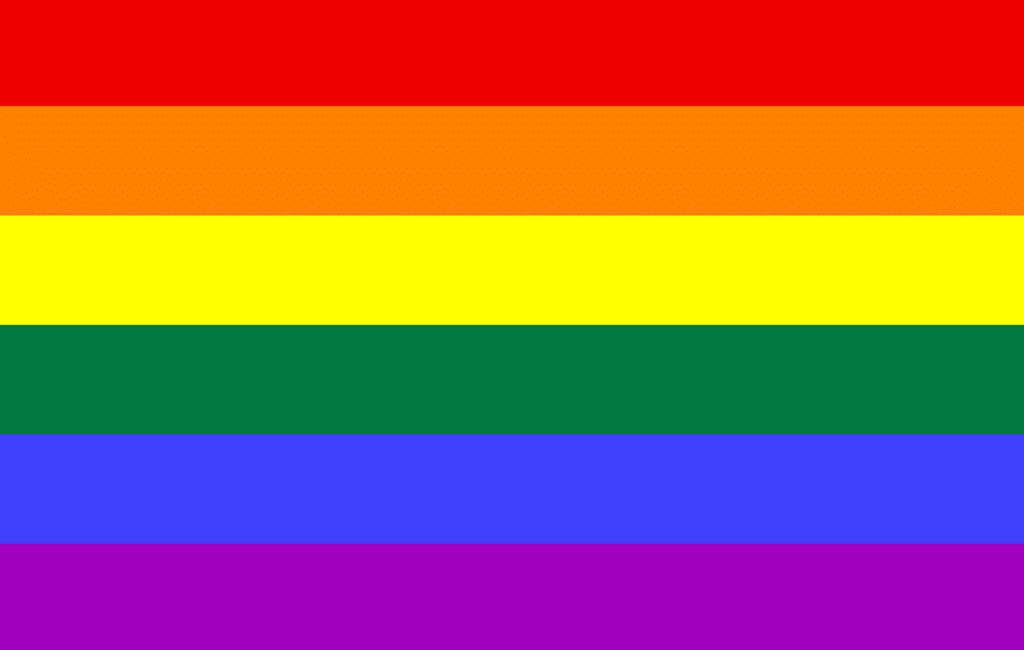
As you can see, a few of the colors have been removed. For example, the hot pink stripe was removed because the fabric in that color was not readily available. All the colors and meanings remain the same as the Gilbert Baker Pride flag but now without pink and indigo.
Related | FDR Four Freedoms Park Transforms Steps Into Giant Pride Flag
The More Color, More Pride Flag
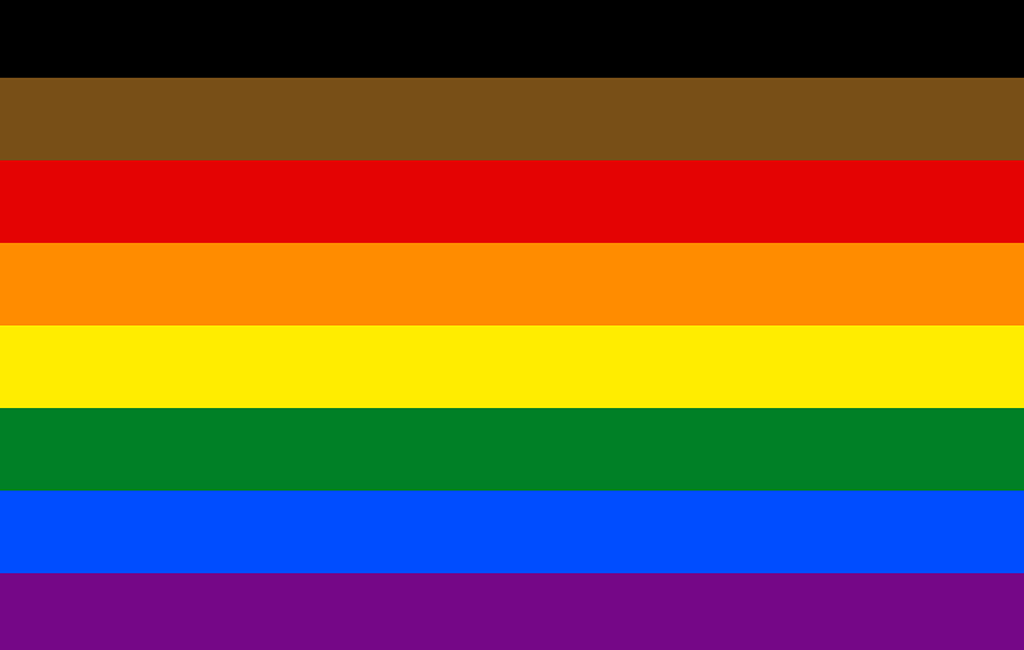
Also known as the Philadelphia Pride flag, this piece was created by Philadelphia-based PR agency Tierney led by Amber Hikes. The black and brown lines were added to highlight the racial diversity of the LGBTQ+ community.
The Progress Pride Flag
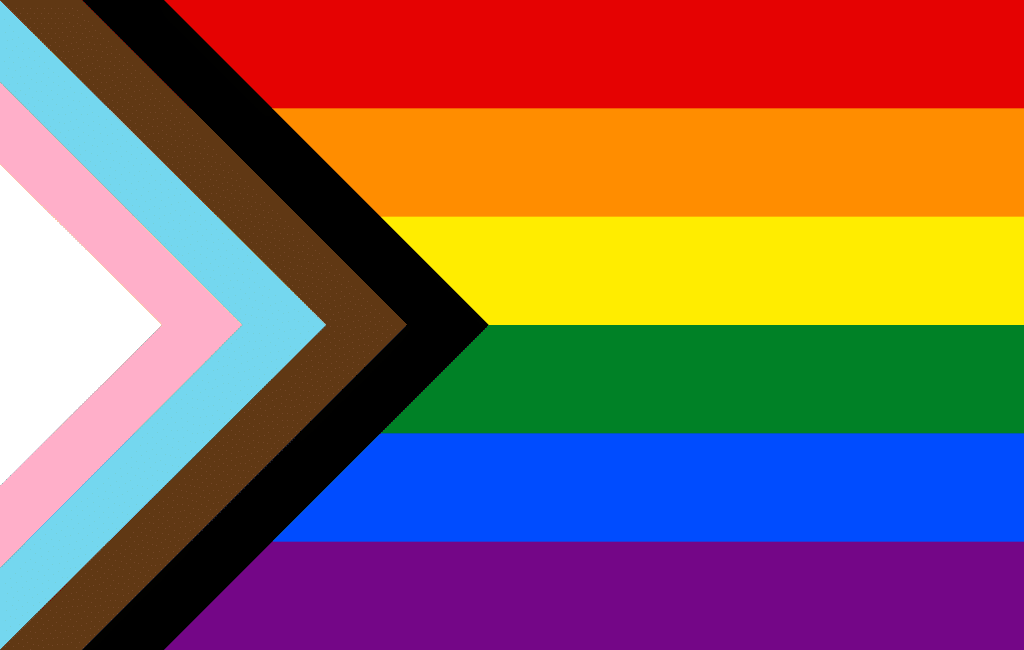
This flag is ostensibly the traditional Pride flag with the inclusion of Philadelphia’s black and brown lines and the trans Pride flag’s white, pink, and blue lines in a chevron shape. The creator, Daniel Quasar, said that the “arrow points to the right to show forward movement, while being along the left edge shows that progress still needs to be made.” Keep reading to learn more about the trans Pride flag.
Intersex-Inclusive Progress Pride Flag

In 2021 Valentino Vecchietti updated the Progress Pride flag to this version, which includes the intersex Pride flag within the chevron. Keep reading to learn more about the intersex Pride flag.
The Bisexual Flag
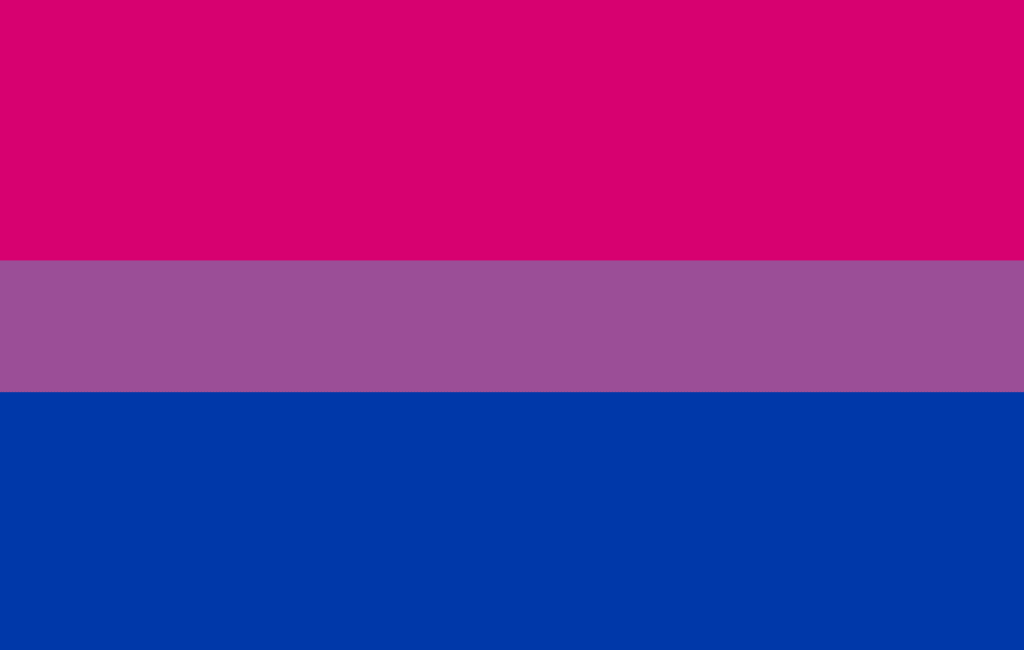
A bisexual person is usually a person who is physically or romantically attracted to more than one gender. The pink line represents same-gender attraction. The purple line represents attraction to multiple genders. The blue line represents different-gender attraction. The creator of this flag is Michael Page.
The Non-Binary Flag
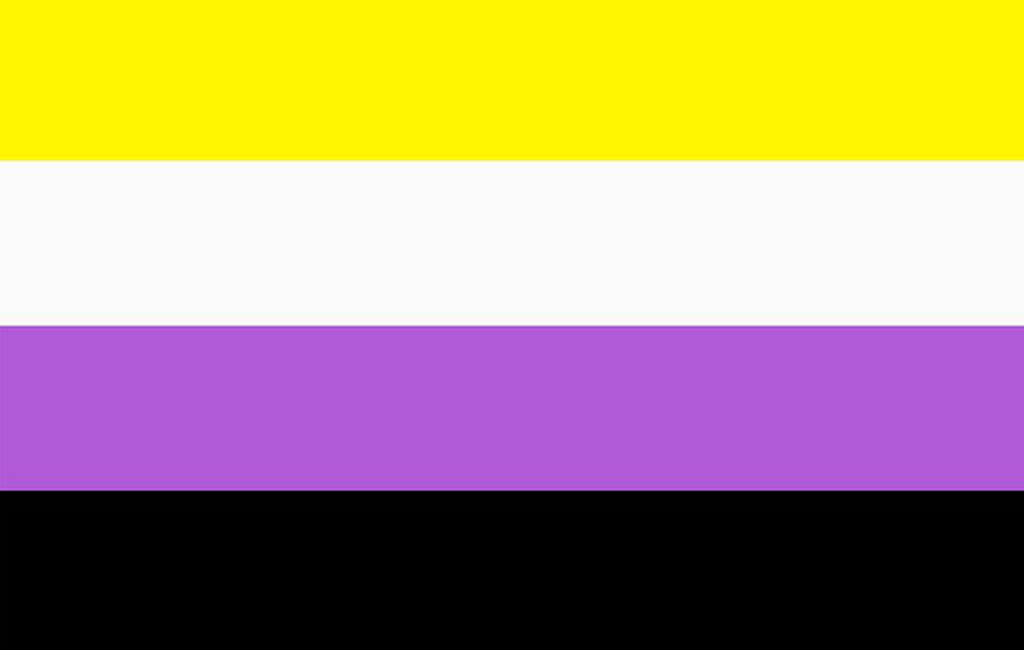
A non-binary person is usually a person whose gender identity does not fit within the traditional gender binary. The yellow line represents those whose gender falls outside of and without reference to the binary. The white line represents people of many or all genders. The purple line represents those whose gender identity falls somewhere between masculine and feminine or is a mix of them. Finally, the black line represents people without gender. The creator of this flag is Kye Rowan.
The Pansexual Flag
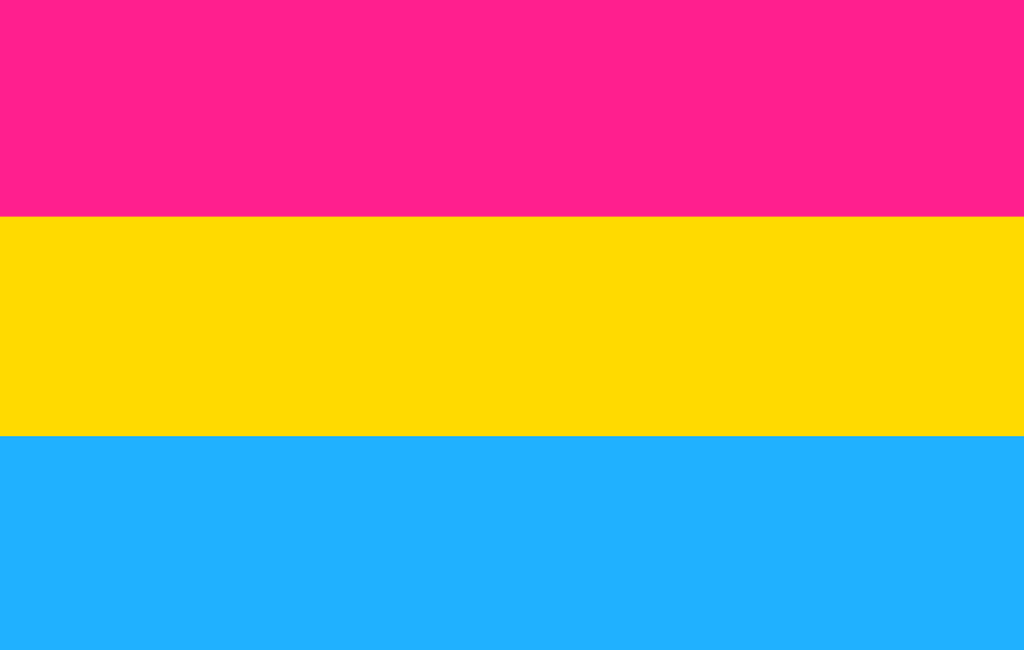
A pansexual person is usually a person who is attracted to people regardless of gender identity. The pink line represents attraction to women. The yellow line represents attraction to those who identify as genderqueer, non-binary, agender, or anyone who doesn’t identify with the gender binary. Finally, the blue line represents attraction to men. The creator of this flag is Jasper V. on Tumblr.
The Demiboy Flag
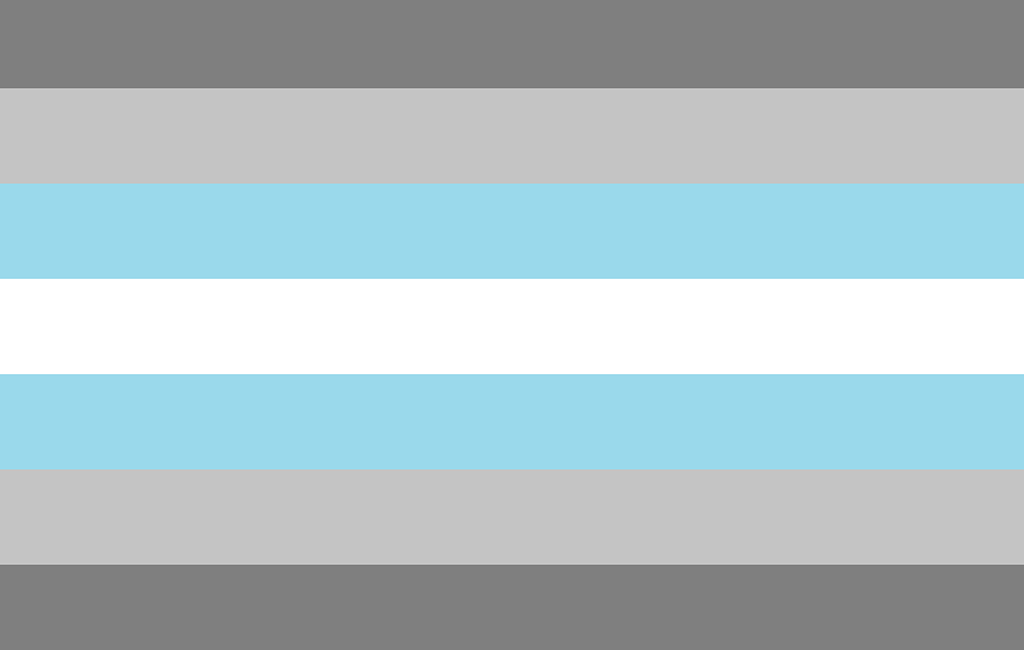
A demiboy is usually a person who partially identifies as a man or boy. In addition, demiboys often feel partly outside the binary. The grey lines represent the grey areas of this gender. The blue lines represent the typical color for manhood or masculinity. Finally, the white line represents neutral or shifting genders. The creator of this flag is Tumblr user TransRants.
Related | Instagram Daddy Shares Vintage Photos of Gay History
The Demigirl Flag
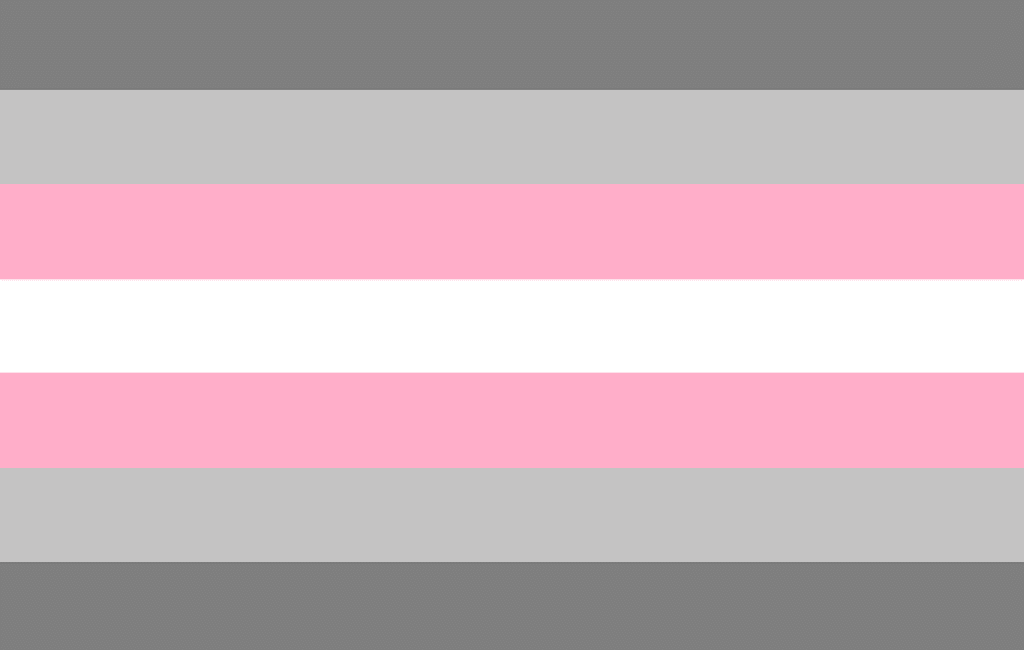
A demigirl is usually a person who partially identifies as a woman or girl. In addition, demigirls often feel partly outside the binary. The grey lines represent the grey areas of this gender. The pink lines represent the typical color for womanhood or femininity. Finally, the white line represents neutral or shifting genders. The creator of this flag is Tumblr user TransRants.
The Transgender Pride Flag
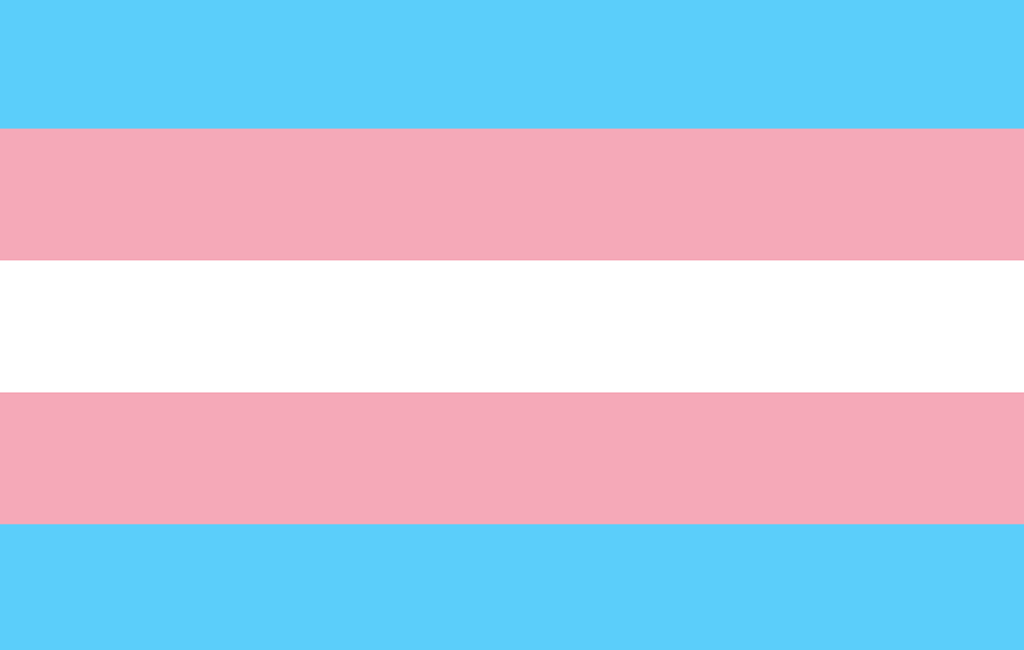
A trans person is a person whose gender identity doesn’t align with the one they were assigned at birth. The light blue lines represent the traditional color for boys. The light pink lines represent the traditional color for girls. Finally, the white line represents those who are intersex, transitioning, or see themselves as having a neutral or undefined gender. The creator of this flag is Monica Helms.
The Genderqueer Flag
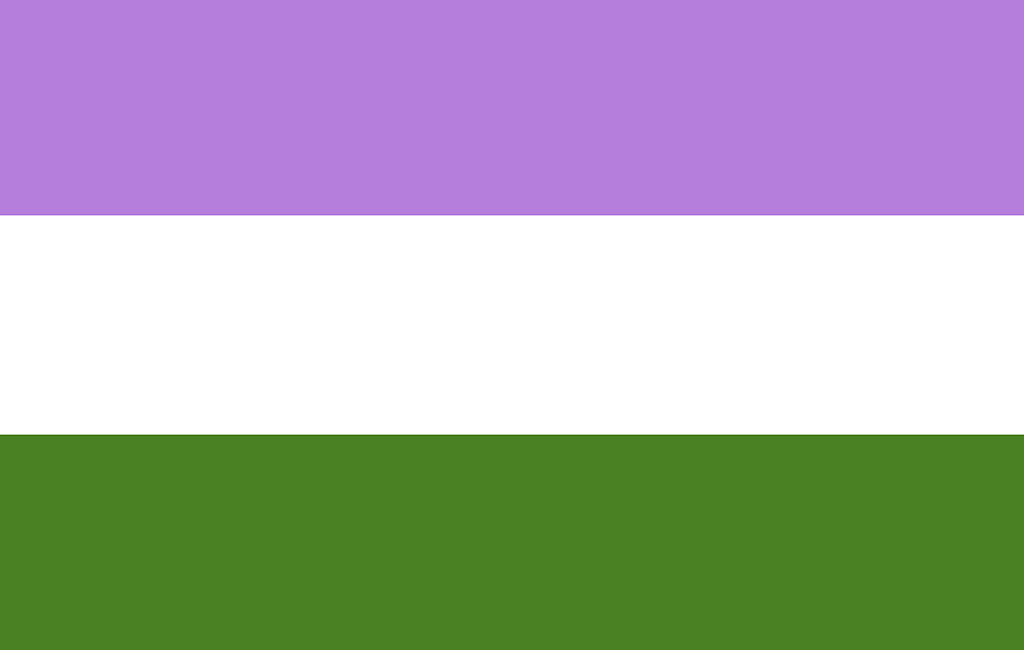
A genderqueer person is usually a person who does not subscribe to conventional gender distinctions but identifies with neither, both, or a combination. The lavender line is a mixture of “blue” and “pink” to represent people who identify with a mixture of femininity and masculinity. The white line represents agender people. The green line is the inverse of lavender to represent people who identify outside of and without reference to the gender binary. The creator of this flag is Marilyn Roxie.
The Intersex Flag
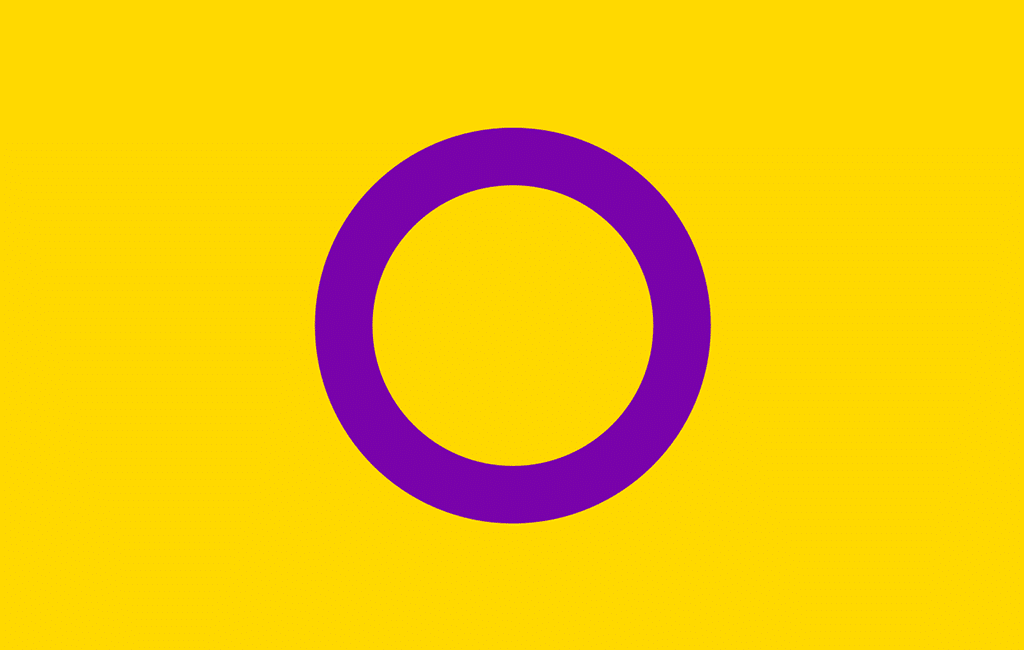
Intersex is an umbrella term used to describe people who are born with biological variations in their sex characteristics that don’t fit male or female categories. The colors purple and yellow are used because they’re seen as gender-neutral colors and go against the typical gendered colors of blue and pink. The circle in the center represents wholeness and completeness. The creator of this flag is Morgan Carpenter.
The Agender Flag
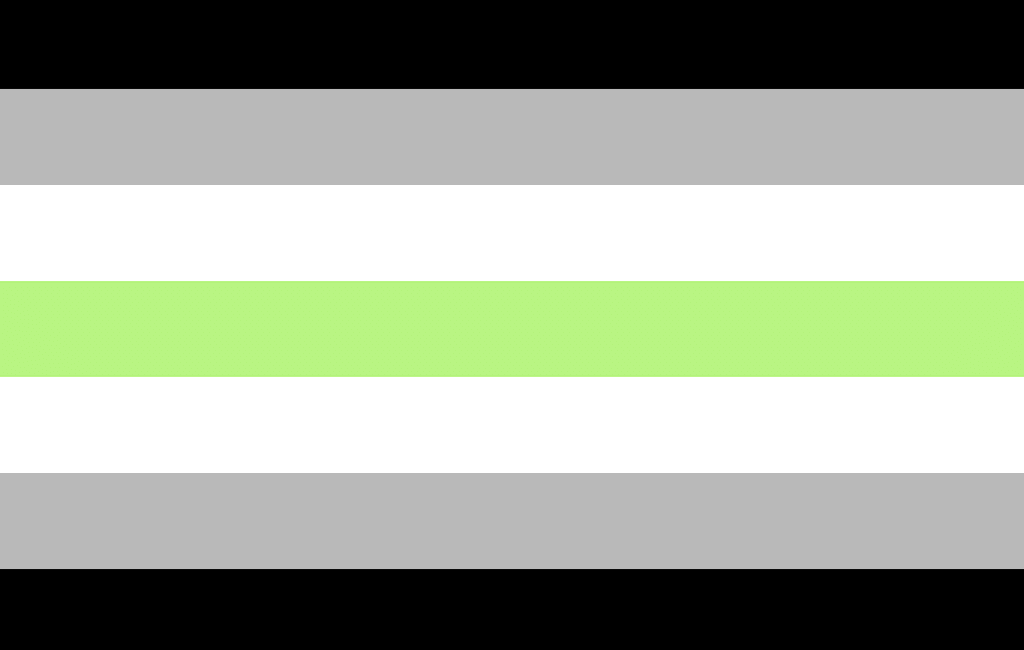
An agender person is usually a person who identifies as having no gender or has a neutral gender. The black and white lines represent the absence of gender. The grey lines represent semi-genderlessness. Finally, the green line represents non-binary genders. The creator of this flag is Tumblr user Salem X.
The Lesbian Flag
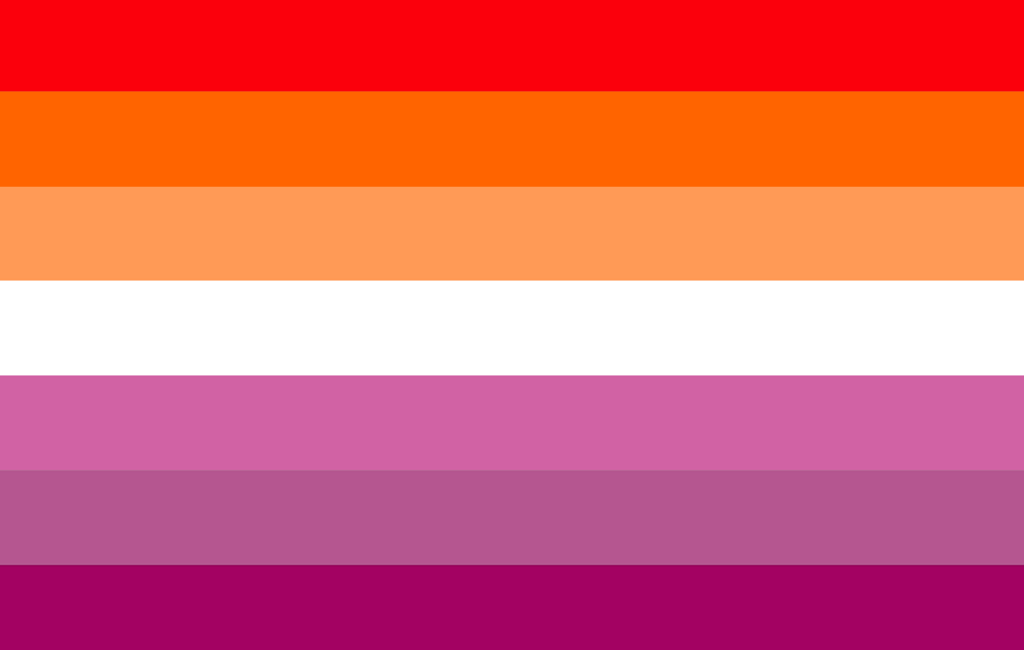
A lesbian is usually a person who identifies as a woman (or non-man) and is attracted to other women (or non-men). The red line represents gender non-conformity. The dark orange line represents independence. The light orange line represents the idea of community. The white line represents unique relationships to womanhood. The light pink line represents serenity and peace. The dark pink line represents love and sex. Finally, the purple line represents femininity. The creator of this flag is Emily Gwen.
The Gay Flag
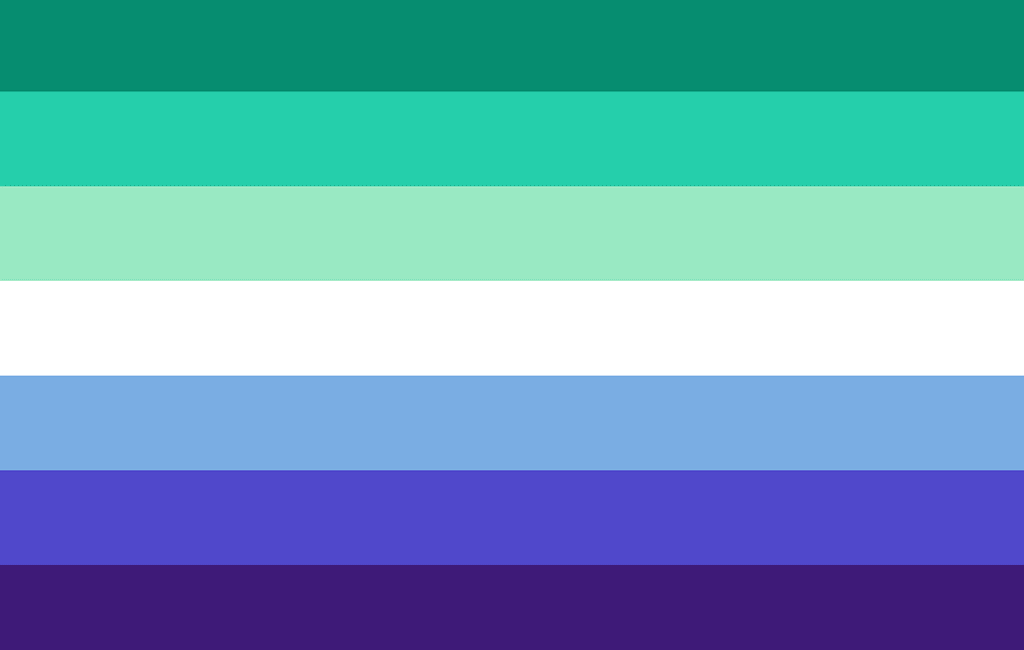
This flag usually represents a person who identifies as a man (or non-woman) and is attracted to other men (or non-women). The dark green line represents the idea of community. The teal line represents healing. The light green line represents joy. The white line represents trans, non-binary, and nonconforming folks. The light blue line represents love. The purple line represents courage. Finally, the dark purple line represents diversity. The creator of this flag is Tumblr user GayFlagBlog.
Related | This Vintage Photo Offers a Rare Glimpse at Gay History
Conclusion
And there you have it! A whole bunch of pride flags and there are so many more. Let us know if you want to see more on Gayety’s Facebook page.

